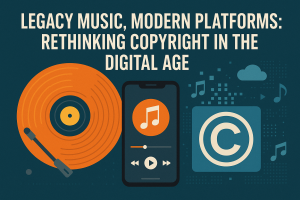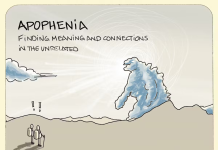Author: Neha Bhambhani
Introduction
India’s cultural memory is being rewritten in real-time through music. The songs that were preserved on tapes and cassettes in the 1960s are now global digital assets. Today, they are being streamed online in the form of short videos, advertisements, and remixes, which can be licensed easily worldwide. However, before the digital boom, many works were distributed in tangible formats, such as broadcast radio, tape, and gramophone records, which were the primary means of reaching audiences. Many composers, lyricists, and music directors signed long-term assignment agreements based on one-time payments. They were not aware of how future technology would increase the value of their work. Under this agreement, creators lacked rights in the future exploitation of their works in digital formats.
The Copyright (Amendment) Act 2012 was a watershed moment when lyricists and music composers got the inalienable right to get royalties for their works that are commercially exploited. However, this reform came after many Bollywood musical works had been assigned under a broad agreement that did not foresee exploitation through digital means. This created a gap between the past legacy deals and current digital revenues.
The present article aims to examine the court’s interpretation of legacy copyright assignment agreements in today’s evolving digital landscape. The disconnect between the interpretation of outdated assignment agreements and the modern technological world is evident in Rupali P. Shah v. Adani Wilmar Ltd. In this case, the court relied on the expansive wording of the 1967 assignment agreement to uphold the assignee’s exploitation rights, including in digital formats. This situation highlights the dilemma: Should courts continue to enforce the fossilized contracts as a benchmark for today’s digital revenues, or is there a requirement for new provisions that ensure fairness for the creator and their heirs’ rights in the digital space?
Top of Form
The Rupali Shah Verdict: “Any & Every Means”
The Bombay High Court delivered a landmark decision by dismissing the suit filed by Rupali Shah, the daughter of the late producer O.P. Ralhan. The plaintiff filed the suit challenging the use of her father’s music by Adani Wilmar, which had obtained the license from Saregama. She contended that the original assignment agreement, signed in 1967, did not grant the right to exploit the music through digital or other non-physical uses.
She relied on the Copyright (Amendment) Act, 2012, which gives the right to receive royalties to lyricists and composers when their works are commercially exploited in cinematograph and independent uses across various modes. Additionally, the assignment of copyright cannot be extended to cover any future mode of exploitation not envisioned at the time of signing the agreement. This implied that the authors must get new legal protection when their works are used in digital formats that did not exist in 1967.
However, the court rejected her contention, citing the words of the original agreement that grant the assignee sole right to production, sale, use, and performance throughout the world “by any and every means whatsoever”. According to the court, this language grants the assignee a wide-ranging and “perpetual right” to use the musical works in all formats and media, including present and future modes not imagined in 1967. The court stresses that the time limit in the 1967 agreement refers to the only duration during which the works would be produced. Once the work is created, the associated rights are assigned without any fixed end date. As a result, the assignee holds “perpetual rights” to exploit the work. However, the language is problematic as under the Copyright Act, protection exists for a statutory term, which lasts for the lifetime of the author plus sixty years after the death of the author. The Court’s wording reflects imprecise language and may create confusion about the contractual scope of assignment within the statutory time. It exemplified “contract fossilization” where such outdated contracts, which are frozen over time due to shifts in market dynamics, bargaining power and technology, are rigidly enforced.
The judgement reinforced that the royalty rights under the 2012 amendment to the act do not apply retroactively to the legacy agreements unless such rights were explicitly agreed by the parties in the agreement. Yet, the court allowed the parties to work out payment of royalties in accordance with the terms of the agreement.
This reasoning creates a fracture as the court preferred analyses based on a literal interpretation of the contractual term, which undermines the purpose of the 2012 amendment to safeguard authors from broad assignments and future exploitations, while securing royalties.
Certainty vs. Fairness in Legacy Copyrights
The case brings legal certainty for companies like Saregama by making a strict interpretation of the language of the 1967 agreement. This became invaluable for the company as it opened the door for exploiting the work assigned in the decade-old agreement across all formats without risk of legal battle. Additionally, such clarity reassures companies to invest long-term in licensing and marketing legacy music to modern audiences.
However, this certainty comes with a trade-off – fairness to creators and their heirs. When legacy agreements are made, as in the current case, creators did not envisage the digital explosion in the form of AI-based remixes or social media. At that time, the economic deals were associated with traditional sales or broadcasting, rather than the immense business opportunities presented by today’s digital world. In this case, the court’s strict application of the phrase raises a paramount question: Should the literal language of the contract take precedence over the reasonable intention and expectations of the creators? Interpreting contracts without considering the intent of the creators could harm their interests, as older agreements may undermine their current needs.
While the court favours the assignee due to the wording of the agreement, it does not close an important avenue for parties to discuss royalty payments, emphasising that the perpetual rights do not preclude the need for fair compensation. However, this arrangement relies on the old agreement rather than the statutory protection available under the post-2012 agreement.
In contrast, Section 203 of the United States Copyright Act grants authors or their heirs the right to terminate the assignment agreement after 35 years. This provision allows them to renew the terms of the agreement as the value of work changes. This right can be exercised irrespective of a contrary agreement in place. In India, the absence of such a mechanism renders the ruling crucial, as it demonstrates that, without statutory reversion rights, the courts have little alternative but to uphold old deals that may no longer be relevant in the digital economy.
Recommendation: Balancing Legacy Contracts with Creator Fairness
Considering the current developments in the technological world, India must ensure contractual certainty and safeguard the interests of creators or their heirs. Section 19A of the Copyright Act 1957 allows the assignor to revoke the assignment if the assignee fails to make use of the rights as agreed in the agreement. This provision can be expanded to include a Statutory reversion right allowing creators to control their work after a fixed period. Such a provision would allow creators or their heirs to capitalize on their work, regain long-term losses, and benefit from the valuable work.
In addition, obligations must be imposed on assignees to provide periodic statements pertaining to earnings generated from legacy deals through exploitation in digital means. This would ensure transparency and allow creators to derive the commercial value of their work.
Furthermore, the agreement should introduce a contractual mechanism where the parties can renegotiate the terms if the work is exploited in unexpected ways after the agreement is signed. This adjustment mechanism will permit creators to secure benefits generated from commercial success. A similar provision under Article 20 of the European Copyright Directive allows authors, or their representatives, to claim “additional, appropriate fair remuneration” if the originally agreed remuneration is disproportionately low compared to the earnings generated from the exploitation of their work.
Conclusion
The judgement throws light on the clarity that contractual languages bring to the assignment of copyright, indicating certainty for the assignee. Yet, such certainty creates structural imbalance for creators and their heirs by ignoring the fruits of the technological world. It is pertinent to ensure fairness to the creators by taking examples from international jurisprudence, mainly the United States and the European Union. India could strengthen its Copyright Act by introducing a statutory reversion right, disclosure requirements, and granting fair remuneration. Ultimately, certainty and fairness must go hand in hand and not at the cost of each other.
About Author: The author, Neha Bhambhani is a Fifth-year B.A. LLB. (Hons.) student at ILNU, Ahmedabad


















